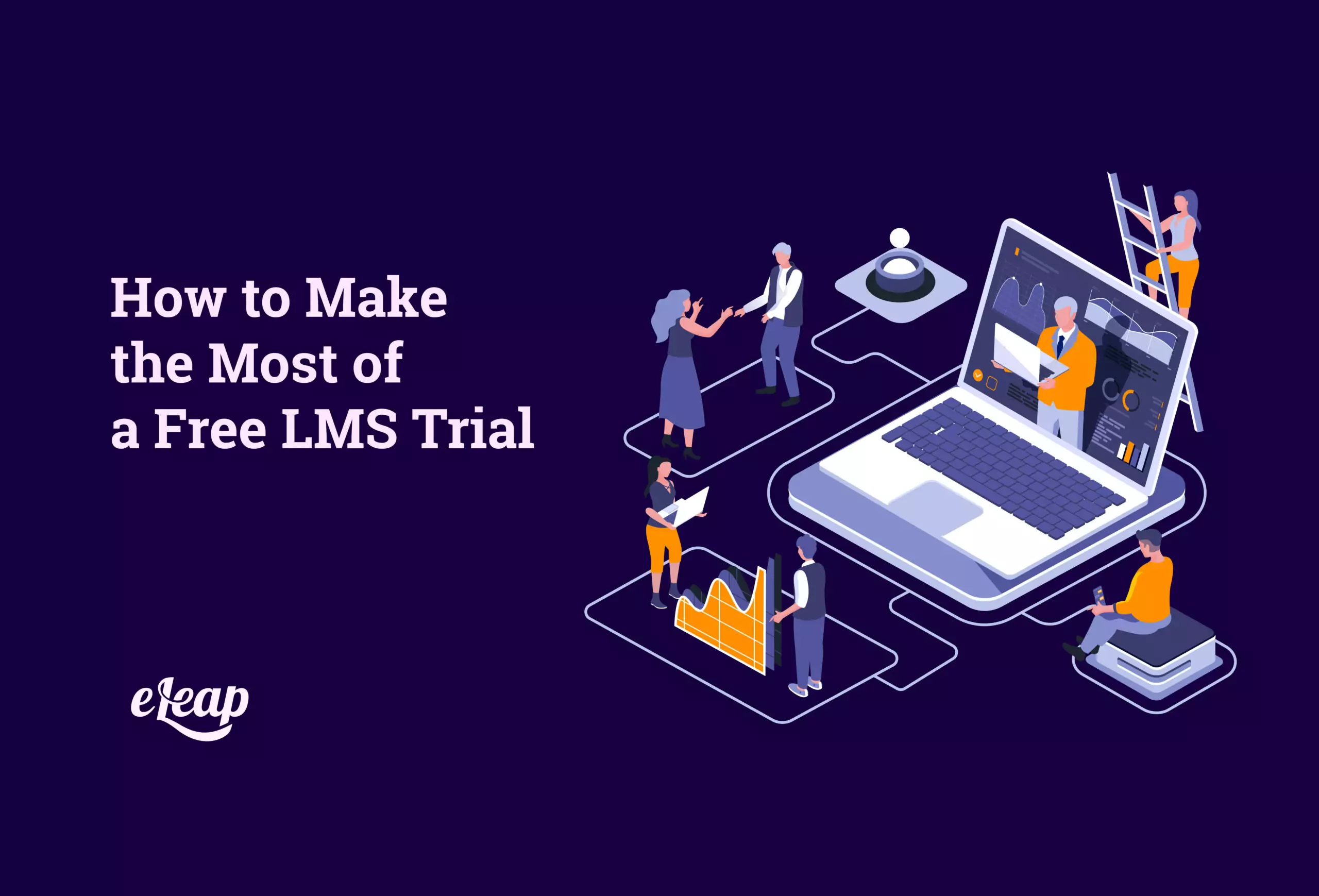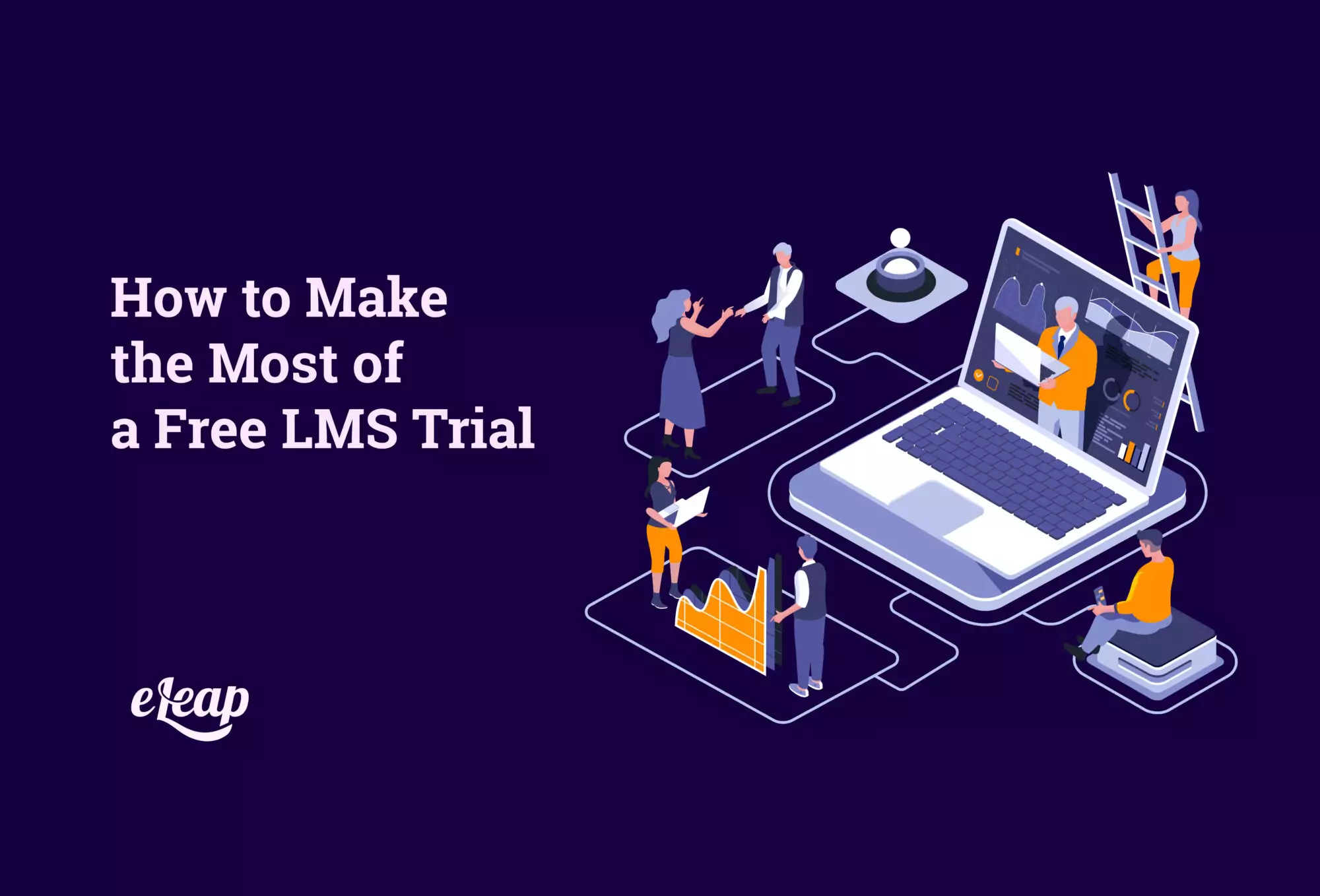How to Make the Most of a Free LMS Trial

Free trials are always a beneficial selling point when it comes to choosing a learning management system. But most organizations don’t make the most of their free trials, and at the end of the day, they’re left with questions and still feeling unsure about a potential purchasing decision.
Free LMS trials may seem like a normal way to test a piece of software, hopefully helping you to decide if it’s an option worth investing in. If you don’t make the most of your free trial, you could end up investing a lot of money in a learning management system that doesn’t check all the boxes.
During your trial period, you need to test the system as thoroughly as possible. But many of those who are considering purchasing an LMS have absolutely no clue as to what aspects of the system they should be testing. To help you make the most out of your learning management system free trial, here are some top tips regarding what you should be looking for and testing.

Have a Demo Call
Many people have no idea as to how LMSs operate, or they think all platforms work the same way. But in fact, LMS platforms are all different, regardless of how simple they may seem. Many people also try to operate the new LMS as if it were the same system they are accustomed to, which, of course, it isn’t. A complementary LMS demo guided by a representative is crucial to understanding the workings of a platform.
By testing and playing with the LMS first, you get a quick understanding of how it works.
But don’t waste your entire free trial period playing around with the system only to end up with no true understanding of how it works. To improve your knowledge of the system, set up a demo call at the beginning of your free trial. A call will help you to figure out the complexities of the system and gain more knowledge about how the platform works. If you arrange a demo immediately after launching your free trial, you will have a better chance of testing the LMS effectively if you know how to use the major features.
Be Clear on Your Organization’s Needs
Consider why you’re testing the LMS in the first place. Hopefully, a huge part of your motivation is because you want to make sure it meets all your organization’s needs. Don’t select a system purely based on looks or how fancy it seems. If you want to train your employees, you should decide upon the features you consider critical for your organization and then test that the LMS provides them.
Test all features to determine whether they have an impact on your training and help identify an LMS which is right for you. A good rule of thumb is to make sure your LMS has the fewest number of unrequired features possible. Don’t get caught up in bells and whistles.
Test Administrative and Learner Functions
When you have a basic understanding of how the new LMS works, it’s time to test it properly. The best way to do this is by testing the administrative functionality of the LMS. Testing the LMS with actual administrative functions, such as adding courses, adding learners, sending out reminders, and checking the analytics function, can provide a real-time understanding of how it will function within your organization.
Using the learner login, the tester should test the newly added courses by completing modules and reviewing the data and reports. Be thorough when going through this process. You want to get a good general overview of the administrative functions as well as how the platform will look to a learner and the way data is presented.
Test How the LMS Functions on Different Platforms
These days, you might be inclined to believe that all software works beautifully and seamlessly on a myriad of different platforms. Unfortunately, that’s a common misconception. Not all learning management systems will work flawlessly on every type of device. These days, the more devices your LMS allows learners to use, the better for your training. So, it’s critical your test the system on different device types, such as smartphones, laptops, desktops, and tablets. Cover all your bases.
Remember, tests for a mobile application are a full-fledged task in themselves. But take the time to engage in thorough mobile testing. There’s a good chance that the mobile software might be used for multiple positions, like sales or field roles, which is why the test needs to be comprehensive.
Follow Up with The Vendor
Interestingly, the most critical aspect of your free trial of your LMS is the follow-up phone call you make with the vendor. Here, you can discuss any shortcomings, customizations required, or features you feel are lacking and see if the vendor provides any suggestions or solutions. Be clear with the vendor about how you felt the LMS performed and what it could have done better. Remember, they want to sell their LMS, so they should be more than willing to help provide a solution.
What’s more, when vendors know you like their platform and are willing to commit to licensing their LMS system, they will often make additional customizations or changes to the system to suit your needs.
Free trials are the single best way to determine how well an LMS will suit your organization. But most people aren’t accustomed to trying out different learning management systems, so it can be tricky to make the most of your free trial. Remember, a free trial of any system gives you the opportunity to learn as much as possible, so take the time to be thorough. Free trials provide you with the best opportunity to understand the LMS and, often, your last chance to choose one that meets your needs before you commit.